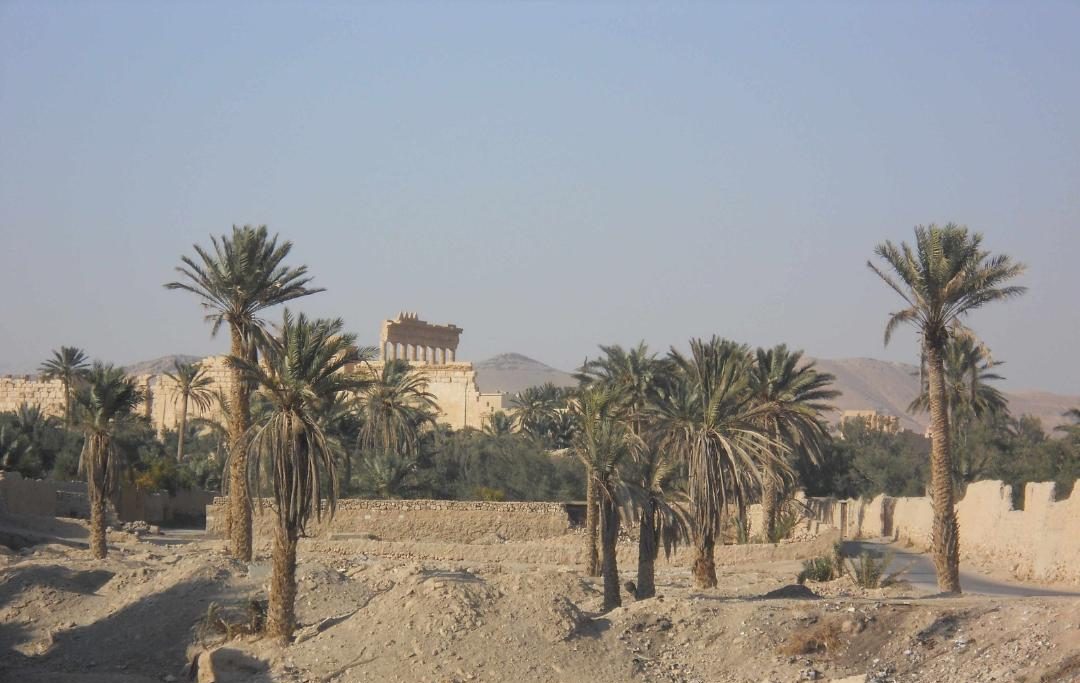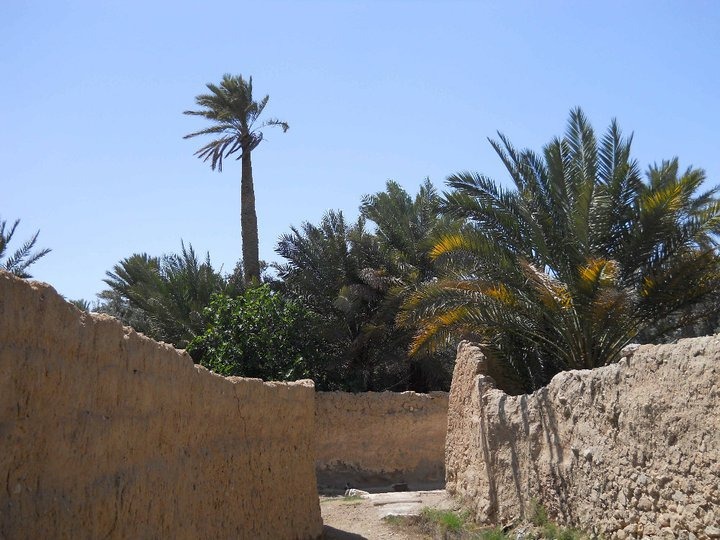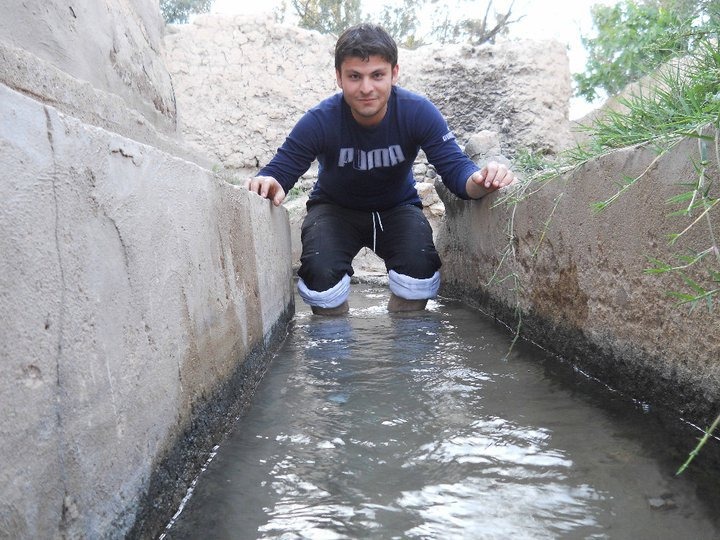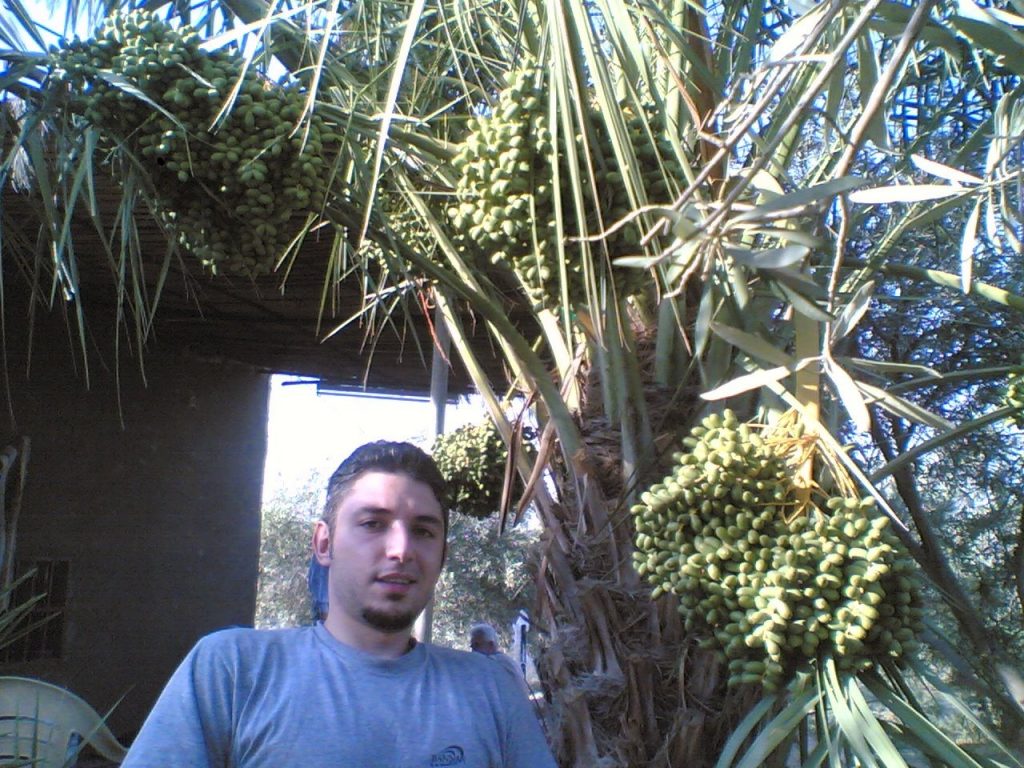When ISIS captured Palmyra for the first time in May 2015, the people of Palmyra, or “al-Tadamera”, were affected by the destruction wrought upon the archaeological site as much as they were by the loss of their families, friends and homes. This should not come as a surprise as the connection between the people of modern Palmyra (Tadmor) and the archaeological site is a deep-rooted one. The ruins of Palmyra were a home and shelter for the local people of Palmyra until a century ago when the French Mandate authorities decided to obliterate their village inside the temple of Bel and move the inhabitants, including our own grandfathers, to the current modern city called Tadmor in Arabic. The archaeological site of Tadmor is often talked about by the international media without relating it to its people or its oasis. The archaeological site on its own is just one element of a trilogy that made Palmyra such a unique place. The oasis and al-Tadamera are essential parts of this trilogy too.
Millennia-old Oasis
Around 2000 BC, in the middle of a vast arid desert, an area of lush vegetation sprang up by the water of Afqa Spring. Gradually, the spring created an oasis, which became a place to rest between Iraq and Syria and a station for convoys. It was this fertile green area in an arid region that attracted people to live there for over 4000 years and build one of the greatest civilisations that existed during the Roman Empire. Palmyra’s very name comes from the abundant palm trees that the oasis encouraged. The oasis of Palmyra is integral to the archaeological site, and is an area of natural heritage, surrounding an area of cultural heritage. UNESCO added the whole site to the World Heritage List in 1980.
Al-Tadamera and the Oasis
To this day, the residents of Palmyra all own gardens in the millennia-old oasis that surrounds the ruins. The oasis was intensively planted by al-Tadamera with palm, olive, and pomegranate trees. While the al-Tadamera worked continuously to preserve this amazingly green spot in the desert, the oasis, in return, gave them some of its bounty and provided them with a place for recreation and relaxation. The oasis has always had a mystical hold on their collective imagination, conjuring up visions of the ancestors who had lived there and built the mud brick walls that separated the gardens from each other. One of my early memories of the oasis was seeing my late grandfather reconstruct the fallen mud brick wall of his garden, helped by my father and my uncles.
On the extremely hot summer days of Palmyra, the oasis felt like an incredible gift for its people. When we arrived at the oasis, thirsty and tired after walking and cycling from the city during the summer, we found the utmost happiness by swimming in its water irrigation canals, listening to the rustling sound of wind through palm fronds and smelling moisture in the air and lush plant life supported by water. We would then usually climb the high palm trees to cut a thread from a cluster of sweet, succulent, and unbelievably delicious dates.
The oasis is also a vital part of the local economy, offering crucial support for the livelihoods of al-Tadamera. Olives, pomegranates, and dates would be harvested by the locals seasonally and then shipped to the markets inside or outside Tadmor and then on to Homs and Damascus. Families would often work collectively during the harvests. Olive trees have always held a particularly special place in al-Tadamera’s hearts. When the olive harvesting began, we used to join our cousins in assisting. We would put a blanket under the tree and pick up every single olive by hand. When we finished picking olives from the lower branches, our uncles would climb a ladder to reach the olives in the upper boughs. Thinking that we were picking olives from the same trees that our great ancestors had picked from over the millennia, inspired awe in us.
The Oasis during the uprising and the civil war
During the uprising, both the regime and the opposition tried to highlight their connection to the archaeological site and the oasis. The protesters continuously tried to reach the archaeological site to protest there. In January 2012, many protesters managed to reach the Arch of Triumph (later destroyed by ISIS) and raise the flag of the revolution next to it. The regime, in its turn, organised many pro-government protests that marched towards the archaeological site where the protesters chanted pro-Bashar al-Assad slogans. As the uprising became militarised, the regime pushed more than 40 tanks and hundreds of soldiers to Palmyra in 2012 to drive the rebels outside the city. The rebels withdrew from the city and took refuge in the Oasis of Palmyra, calling themselves “Palmyra Oasis Revolutionaries”. Palmyra Oasis is a very dense area with lots of trees and very narrow lanes, so it was difficult for the regime’s militias to fight inside it. The regime continued shelling the oasis for many months, which led to the outbreak of large fires. This prevented the local people from tending their gardens, as it was too dangerous for them to do so. Eventually, the rebels surrendered and left the oasis in 2013, but many people continued to cut down trees for firewood because of increased fuel prices and its rarity due to the war condition.
Things remained relatively stable for a few years until the emergence of ISIS, which captured the city twice, leading to huge battles with the Syrian regime that destroyed both the ancient and the modern city. Most of the civilians who were displaced have not managed to return, as they feared reprisals from the Syrian regime’s militias and the continued presence of ISIS militants in the surrounding desert. During this period, none of the locals have been able to properly cultivate their gardens or look after the trees. On the 25th of May, al-Tadamera woke up to the tragic news of a mass fire erupting in their oasis, exterminating nearly 200 hectares of the historic palm and olive trees in the western part of the oasis. The displaced locals shared photos and videos of fire burning the oasis and commented with great sorrow that the last element of the beautiful desert trilogy of Palmyra has not managed to survive the tragedy of the Syrian Civil War.
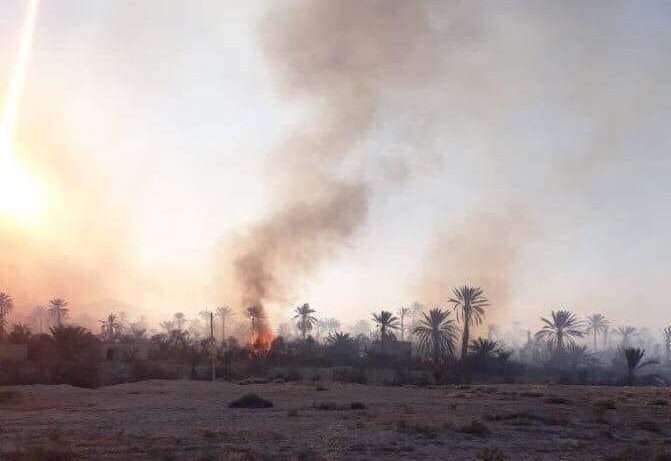
Without the oasis, the archaeological site would appear as having no soul. Photo source: Bachar Khleif, uploaded to Facebook on 27 May, 2020.
Haian Dukhan is a Syrian British academic and the author of “State and Tribes in Syria: Informal Alliances and Conflict Patterns” (Routledge, 2019).
Hasan Ali is an archaeologist from Palmyra. He worked for the DGAM, at the Palmyra Museum for many years. He is currently working as an Associate Researcher at the DAI in Istanbul.
 The Aleppo Project
The Aleppo Project